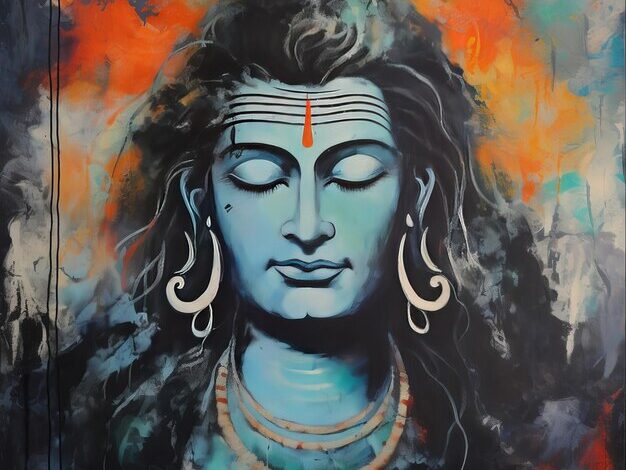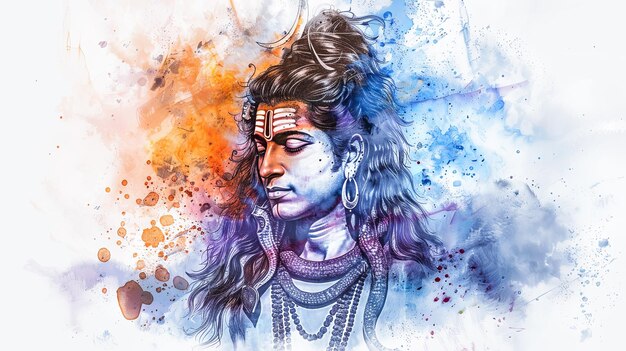Discovering the Art and Significance of Lord Shiva Paintings

Lord Shiva, one of the most revered deities in Hinduism, is more than just a religious figure—he is an embodiment of cosmic energy, destruction, and rebirth. His enigmatic persona has inspired centuries of art, with Lord Shiva paintings holding a special place in both spiritual practices and decor.
Whether you’re an art enthusiast or someone seeking spiritual connection, Lord Shiva paintings offer a remarkable blend of cultural heritage and artistry. This blog explores the art, techniques, and significance behind these powerful depictions, and how they can enrich your life.
An Introduction to Lord Shiva
Lord Shiva, often referred to as “The Destroyer” in the Hindu Trinity, symbolizes the cycle of creation, preservation, and destruction. He is the epitome of balance—simultaneously fierce and compassionate, ascetic and householder.
His imagery is deeply symbolic:
- The Third Eye represents spiritual insight and the ability to see beyond illusion.
- The Trident (Trishul) symbolizes balance between mind, body, and spirit.
- The Snake Around His Neck signifies mastery over ego and fear.
- The Crescent Moon and the River Ganga on his head represent the eternal flow of time and purity.
This rich symbolism makes Lord Shiva a favored subject for artists, as every element of his depiction tells a profound story.
The Art of Devotion
The tradition of capturing Lord Shiva’s divine essence in paintings has its roots in Hindu art, dating back thousands of years. These artistic creations are more than visual representations—they are acts of devotion.
Traditional Styles:
Many classical Lord Shiva paintings are influenced by styles like:
- Pattachitra: A traditional art form from Odisha known for intricate detailing and mythological themes.
- Madhubani: From Bihar, characterized by bright colors and spiritual motifs.
- Tanjore Art: Known for its vibrant hues and gold leaf embellishments, often used to depict deities.
Contemporary Interpretations:
Modern artists are blending traditional elements with abstract and minimalist styles, catering to a younger audience seeking Shiva paintings for home decor or personal spirituality. From vibrant watercolors to surreal digital art, the contemporary approach keeps the tradition alive while evolving with changing tastes.
Popular Depictions of Lord Shiva
Several iconic depictions of Lord Shiva stand out for their artistic and spiritual significance. Here are some cherished themes and their stories:
- Shiva in Meditation (Dhyanamurti):
A serene Lord Shiva, sitting in meditation atop Mount Kailash, represents peace and self-realization. This is a popular choice for individuals seeking calm and focus in their daily lives.
- Nataraja – The Cosmic Dancer:
Perhaps the most celebrated depiction, Shiva as Nataraja portrays the cosmic dance of creation and destruction. The dynamic pose, encircled by a ring of fire, is a symbol of life’s eternal rhythm.
- Ardhanarishvara:
This form portrays Shiva as half-man and half-woman, merging with his consort Parvati. It signifies the balance of masculine and feminine energies in the universe.
- Shiva Drinking the Halahala Poison:
This painting often depicts the mythological story of Shiva consuming poison during the churning of the ocean (Samudra Manthan) to save the universe from destruction.
- Shivling with Cosmic Aura:
A simple yet powerful depiction of a Shivling with vibrant cosmic colors is a contemporary favorite for spiritual seekers.
Each of these themes carries deep cultural and philosophical meanings, making Lord Shiva paintings more than mere artwork—they are windows into his divine stories.
Techniques and Styles of Lord Shiva Paintings

Artists use a variety of techniques and mediums to bring lord Shiva paintings majesty to life.
Classical Techniques
- Miniature Paintings: Miniature styles use fine brushwork and intricate detailing, often found in Rajasthan and Mughal art traditions.
- Mural Art: Temple murals, especially in South India, portray Shiva in grand and detailed proportions, with vivid colors.
Modern Styles
- Oil and Acrylics: These mediums add depth and vibrancy, making paintings ideal for contemporary home decor.
- Digital Art: Digital artists are now recreating Shiva with surreal effects, making his depictions accessible to a global audience.
The diverse techniques ensure there’s a Lord Shiva painting for every aesthetical preference—be it a traditional Tanjore masterpiece or a sleek, modern canvas piece.
The Spiritual Connection
Beyond their artistic value, Lord Shiva paintings hold immense spiritual and cultural importance.
- Spiritual Upliftment:
Keeping a Lord Shiva painting in your space can serve as a reminder of his teachings, fostering inner peace, self-awareness, and resilience.
- Gifting Wisdom:
Gifting a Shiva painting carries deep significance, as it symbolizes blessings for balance, strength, and spiritual growth.
The energy of these paintings often influences the atmosphere of a space. For example, a meditative Shiva painting can create a calming ambiance in your home or workplace.
Where to Find Lord Shiva Paintings
If you’re inspired to own or gift a Lord Shiva painting, here’s where you can find exceptional pieces:
- Art Galleries:
Visit your local art galleries for hand-crafted, traditional Shiva paintings.
- Online Stores:
Websites like Etsy, Amazon, and Indian craft stores offer easy access to a variety of styles, from classical works to modern digital interpretations.
- Commissioned Pieces:
For a personal touch, work with a painter to commission a custom piece. Many artists specialize in traditional Hindu art forms and can craft something unique for you.
- Handicraft Exhibitions:
Attend exhibitions showcasing Indian handicrafts—these events often feature beautiful religious art.
When choosing a painting, remember to ensure it aligns with your space and aesthetic preferences, while honoring the cultural significance of the artwork.
Experience the Divine Beauty of Lord Shiva Paintings
Lord Shiva paintings are more than just art—they are expressions of devotion, cultural heritage, and spirituality. Whether you’re drawn to his serene meditative form or the vibrant energy of Nataraja, each painting connects us to his divine essence and timeless stories.
Take the time to explore different styles and depictions, and find the one that resonates with your soul. Bring home a piece of this cosmic energy and experience its profound impact in your life.
Do you have a favorite depiction of Lord Shiva? Share your thoughts in the comments below or explore our collection of curated Lord Shiva paintings for your home or as a thoughtful gift.
Meta Data
Meta Title:
Lord Shiva Paintings | Symbolism, Styles & Spiritual Significance
Meta Description:
Explore the symbolism, techniques, and beauty of Lord Shiva paintings. Discover his most iconic depictions and the spiritual significance they hold.



